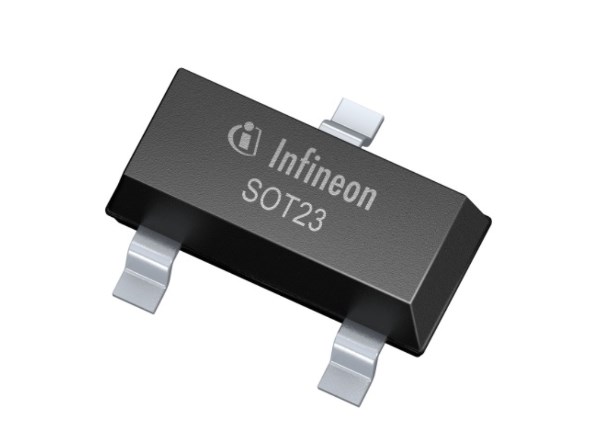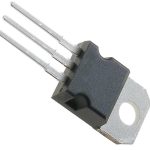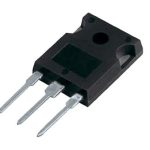When it comes to small signal MOSFETs, the BSS123 is a name that often pops up. With its impressive features and wide range of applications, understanding the basics of this MOSFET becomes essential. So, let’s delve into the world of BSS123 and explore its unique characteristics.
What is BSS123?
BSS123 is a popular N-channel enhancement mode MOSFET (Metal-Oxide-Semiconductor Field-Effect Transistor) that belongs to the Small Signal MOSFET family. It is designed for low power applications and operates with a gate-source voltage of 20V and a drain-source voltage of 100V. The BSS123 has a compact SOT-23 surface mount package, making it suitable for use in small electronic circuits.
How does BSS123 work?
The BSS123 works based on the principle of field-effect modulation. When a positive voltage is applied to the gate terminal relative to the source terminal, it creates an electric field within the channel region, which allows the flow of current between the drain and source terminals. In other words, by varying the voltage applied to the gate terminal, the conductivity of the channel can be controlled, enabling the MOSFET to act as a switch or an amplifier.
What is the function of BSS123?
The primary function of the BSS123 is to control and amplify electrical signals in low power applications. It is commonly used in signal switching, analog signal amplification, and low voltage power management circuits. Due to its small size, low threshold voltage, and low on-resistance, the BSS123 is particularly useful in portable electronic devices where space and power efficiency are crucial.
What is the equivalent of BSS123?
BSS123 is equivalent to other similar N-channel enhancement-mode MOSFETs such as BS170, 2N7002, and IRLML2402. These transistors have similar characteristics and can be used interchangeably in many applications.
Feature
- Low threshold voltage: The BSS123 has a low threshold voltage, typically around 1V, which allows for efficient control and operation in low-power circuits.
- Low on-resistance: The on-resistance of the BSS123 is relatively low, enabling efficient conduction of current when the MOSFET is in its active state.
- Fast switching speed: The BSS123 offers fast switching characteristics, making it suitable for applications that require rapid on/off transitions.
- Small package size: The BSS123 comes in a compact SOT-23 surface mount package, which makes it ideal for use in space-constrained electronic designs.
- Low power consumption: Due to its low threshold voltage and on-resistance, the BSS123 helps minimize power losses and maximize power efficiency in low-power applications.
- RoHS compliant: The BSS123 is compliant with the Restriction of Hazardous Substances (RoHS) directive, ensuring it is environmentally friendly and free from hazardous materials.
Applications
- Signal switching: The BSS123 is commonly used as a switch in various signal switching applications. It can be used to control the flow of signals in audio and video circuits, communication systems, and data acquisition systems.
- Analog signal amplification: With its low on-resistance and fast switching speed, the BSS123 is suitable for amplifying small analog signals in applications such as audio amplifiers, sensor interfaces, and measurement circuits.
- Low voltage power management: The BSS123 is often employed in low voltage power management circuits, such as voltage regulators and battery-powered devices. Its low threshold voltage and low power consumption make it an efficient choice for controlling and managing power in these applications.
- Portable electronics: Due to its small package size and low power requirements, the BSS123 is widely used in portable electronic devices like smartphones, tablets, wearable devices, and portable audio players.
- Automotive electronics: The BSS123 finds applications in automotive electronics, where it can be used for controlling various systems such as lighting, power distribution, and motor control due to its small size and low power consumption.
- Industrial control systems: In industrial control systems, the BSS123 can be utilized for switching and amplifying signals in automation equipment, motor control units, and monitoring systems.
Pcb Symbol And Footprint
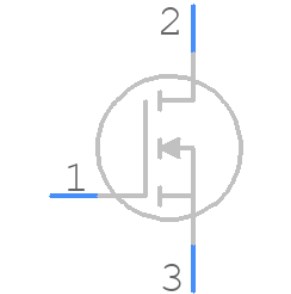
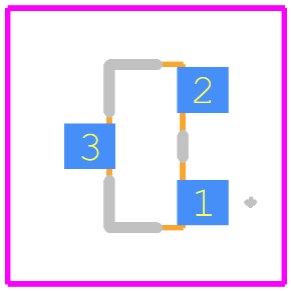
Datasheet
If you want to check the datasheet to learn more useful information about BSS123, you can click here right now!
BSS123 Model
BSS123-7-F
BSS123-7-F is a specific variant of the BSS123 MOSFET. The “7” in the part number refers to the device’s tape and reel packaging, which is commonly used in automated manufacturing processes. The “-F” indicates that it is a surface mount package type. This variant is widely used in electronics manufacturing where automated assembly is required.
BSS123NH6327
BSS123NH6327 is another specific variant of the BSS123 MOSFET. The “NH6327” in the part number indicates the specific product code or series. It might represent variations in electrical characteristics, packaging, or other specifications specific to this variant. It is always important to refer to the datasheet or manufacturer’s documentation for detailed information on the specific variant and its applications.
Tips For Using BSS123
1. Understand the specifications
Before using the BSS123 MOSFET, it is crucial to thoroughly read and understand its datasheet. Pay attention to parameters such as maximum voltage ratings, current ratings, and power dissipation capabilities to ensure proper usage.
2. Consider the threshold voltage
The BSS123 has a low threshold voltage, typically around 0.8V. This means that it can be easily triggered by low-level signals. Take this into account when designing circuits and selecting input signal levels.
3. Handle with care
MOSFETs are sensitive to static electricity, so it is important to use proper anti-static precautions when handling the BSS123. Ground yourself and use an anti-static wrist strap or mat to avoid damaging the component.
4. Apply appropriate gate voltage
The BSS123 operates as a switch and requires a suitable gate voltage to turn on and off effectively. Ensure that the gate voltage exceeds the threshold voltage for proper operation. Consult the datasheet for recommended values.
5. Mind the power dissipation
When operating the BSS123, be mindful of its power dissipation capabilities. Exceeding the maximum power dissipation can lead to overheating and potential failure. Consider using heat sinks or thermal management techniques if necessary.
6. Check for leakage current
Like all MOSFETs, the BSS123 may have some leakage current when in the off state. Verify the leakage current specified in the datasheet and consider its impact on your application, particularly in low-power designs.
7. Use suitable protection circuits
To prevent damage from voltage spikes or transients, incorporate suitable protection circuits such as diodes or transient voltage suppressors across the drain and source terminals of the BSS123.
8. Test and verify performance
Before integrating the BSS123 into your final circuit design, perform thorough testing and verification to ensure its functionality meets your requirements. Measure characteristics such as on-resistance, switching speed, and current handling capabilities.
By following these tips, you can optimize the performance and reliability of the BSS123 MOSFET in your electronic designs.

Conclusion
In conclusion, the BSS123 MOSFET is a versatile component that has revolutionized various industries with its exceptional performance. From signal switching to power management, this tiny device has made its mark in the electronics realm. As technology continues to advance, we can expect to see more innovative applications for the BSS123, making it an integral part of modern electronic devices.

